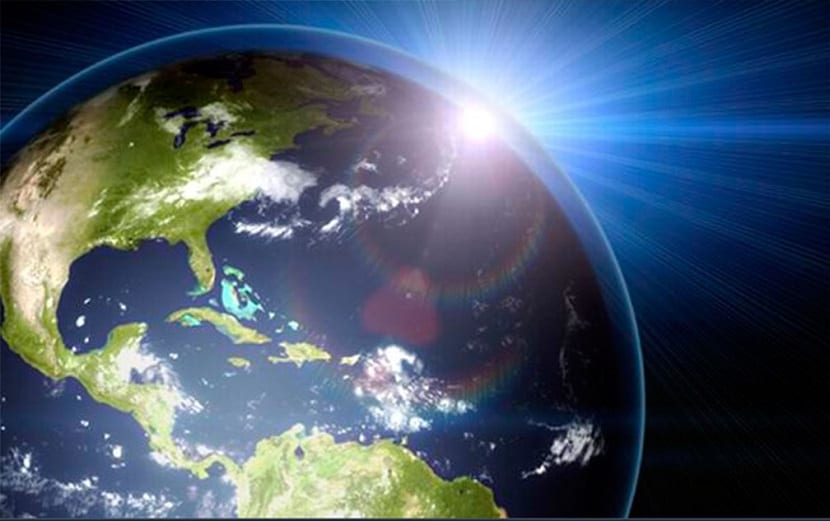
In the different layers of the atmosphere there is a layer whose ozone concentration is the highest on the entire planet. This is the so-called ozone layer. This area located in the stratosphere about 60 km above sea level it has necessary effects for life on the planet.
With the emission of certain harmful gases into the atmosphere by human beings, this layer underwent a thinning that endangered its function for life on the planet. However, today it seems to be recovering. Do you want to know what function the ozone layer has and how important it is for humans?
Ozone gas

To begin to know what function the ozone layer has, we must first know the properties of the gas that composes it: ozone gas. Its chemical formula is O3, and it is the allotropic form of oxygen, that is, one of the modalities in which it can be found in nature.
Ozone is a gas that decomposes into ordinary oxygen at ordinary temperatures and pressure. Likewise, it gives off a penetrating sulfurous odor and its color is soft bluish. If ozone were on the earth's surface it would be toxic to plants and animals. However, it exists naturally in the ozone layer and without that high concentration of this gas in the stratosphere we would not be able to go outside.
Role of the ozone layer
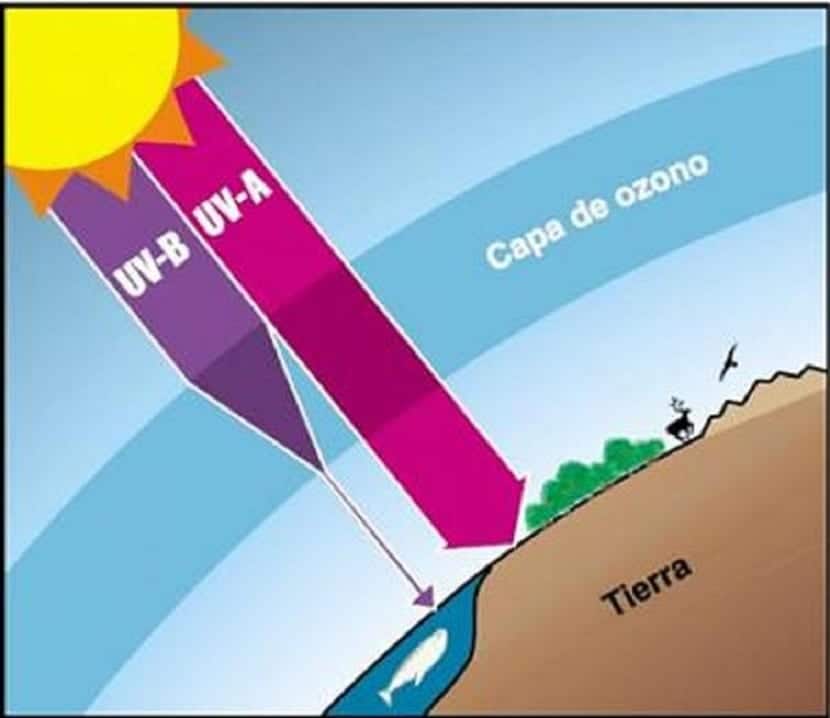
Ozone is an important protector of life on the Earth's surface. This is due to its function as a protective filter against ultraviolet radiation from the Sun. Ozone is responsible for mainly absorbing the Sun's rays that are found in the wavelength between 280 and 320 nm.
When the ultraviolet radiation from the Sun hits the ozone, the molecule breaks down into atomic oxygen and common oxygen. When common and atomic oxygen meet again in the stratosphere they rejoin to form an ozone molecule. These reactions are constant in the stratosphere and ozone and oxygen coexist at the same time.
Chemical characteristics of ozone
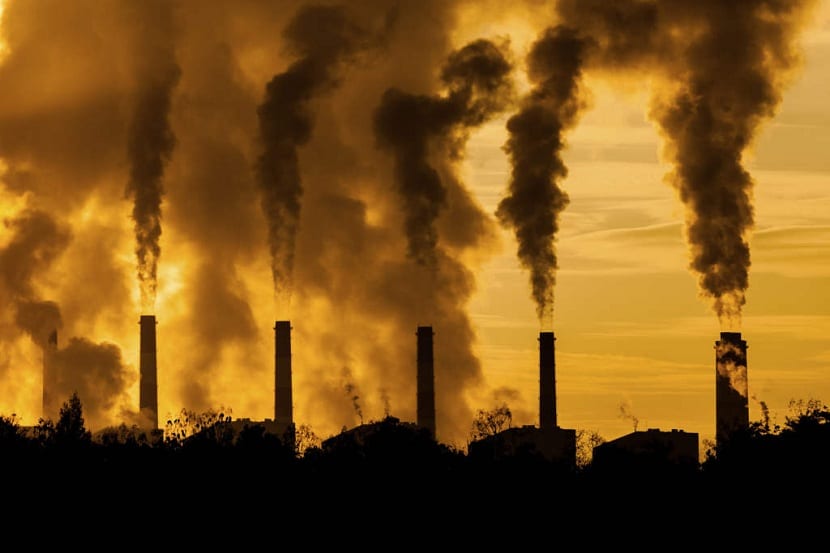
Ozone is a gas that can be detected in electrical storms and near high voltage or sparking equipment. For example, in mixers, when sparks are produced by the contact of the brushes, ozone is produced. It can be easily recognized by the smell.
This gas can condense and appear as a very unstable blue liquid. However, if it freezes it will present a black-purple color. In these two states it is a very explosive substance given its great oxidizing power.
When ozone decomposes into chlorine, it is capable of oxidizing most metals and, although its concentration is very small at the earth's surface (only about 20 ppb), it is capable of oxidizing metals.
It is heavier and more active than oxygen. It is also more oxidizing, which is why it is used as a disinfectant and germicide, due to the oxidation of the bacteria that this effect. It has been used to purify water, destroy organic matter, or the air in hospitals, submarines, etc.
How is ozone generated in the stratosphere?
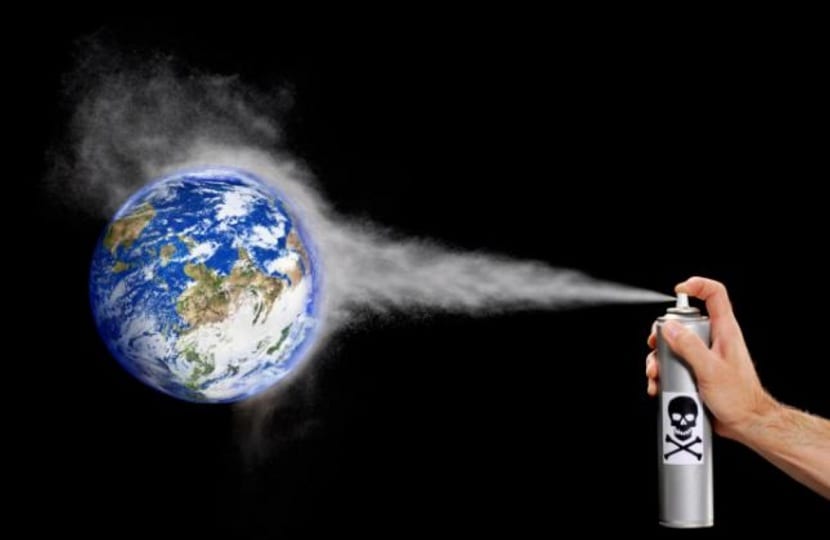
Ozone is produced mainly when oxygen molecules are subjected to large amounts of energy. When this happens, these molecules become atomic oxygen free radicals. This gas is extremely unstable, so when it encounters another common oxygen molecule, it binds to form ozone. This reaction occurs every two seconds or so.
In this case, the energy source that subjects the common oxygen is ultraviolet radiation from the sun. Ultraviolet radiation is what dissociates molecular oxygen into atomic oxygen. When the atomic and molecular oxygen molecules meet and form ozone, it is destroyed in turn by the action of ultraviolet radiation itself.
The ozone layer is continuously creating and destroying ozone molecules, molecular oxygen and atomic oxygen. In this way, a dynamic equilibrium is generated in which ozone is destroyed and formed. This is how ozone acts as a filter that does not let this harmful radiation pass to the surface of the Earth.
The ozone layer

The term "ozone layer" itself is generally misunderstood. That is, the concept is that at a certain height in the stratosphere there is a high concentration of ozone that covers and protects the Earth. More or less it is represented as if the sky were covered by a cloudy layer.
However, this is not so. The truth is that ozone is not concentrated in a stratum, nor is it located at a specific height, but rather that it is a scarce gas that is highly diluted in the air and that, in addition, appears from the ground to beyond the stratosphere . What we call the "ozone layer" is an area of the stratosphere where the concentration of ozone molecules is relatively high (a few particles per million) and much higher than the other concentrations of ozone on the surface. But the concentration of ozone compared to that of other gases in the atmosphere such as nitrogen, is miniscule.
If the ozone layer disappeared, the sun's ultraviolet rays would strike the earth's surface directly without any type of filter and would cause the surface to be sterilized, annihilating all terrestrial life.
The concentration of ozone gas in the ozone layer is of about 10 parts per million. The concentration of stratospheric ozone varies with altitude, but it is never more than one hundred thousandth of the atmosphere in which it is found. Ozone is such a rare gas that, if at one point we were to separate it from the rest of the air and were to attract it to the ground, it would only be 3mm thick.
Ozone layer destruction
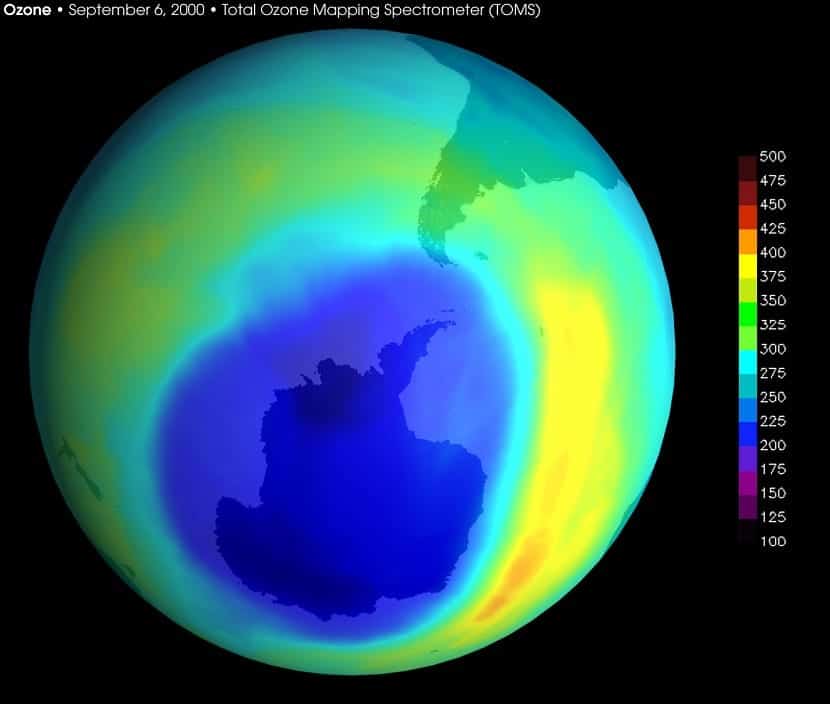
The ozone layer began to deteriorate back in the 70s, when the damaging action that nitrogen oxide gases have on it was seen. These gases were expelled by supersonic planes.
Nitrous oxide reacts with ozone resulting in nitric oxide and common oxygen. Although this happens, the action on the ozone layer is minimal. The gases that really damage the ozone layer are CFCs (chloro-fluoro-carbons). These gases are the result of the use of synthetic chemicals.
The first time that a notion of the depletion of the ozone layer was had was in 1977 in Antarctica. In 1985 it was possible to measure that the harmful ultraviolet radiation from the Sun had increased 10 times and that the ozone layer over Antarctica had decreased by 40%. From there it is when it began to speak of the ozone hole.
The thinning of the ozone layer was long a mystery. Explanations linked to the solar cycles or dynamic characteristics of the atmosphere seem unfounded and today it seems proven that it is due to the increase in freon emissions (Chlorofluorocarbon or CFC), a gas used in the aerosol industry, plastics and refrigeration and air conditioning circuits.
CFCs are very stable gases in the atmosphere, since they are neither toxic nor flammable. This gives them a long life, allowing you to destroy ozone molecules that are on your way for a long time.
If the Ozone Layer were destroyed, the increase in UV radiation would trigger a catastrophic series of biological reactions such as the increase in the frequency of infectious diseases and skin cancer.
On the other hand, the production of greenhouse gases (emitted from the Earth's surface by the action mainly of man) that generate the so-called "Greenhouse effect", it will result in global warming with regional changes in temperature, which will result in a rise in sea level as a result, among other factors, of the gradual melting of large masses of polar ice.
This is like the fish that bites its tail. The greater the amount of solar radiation that affects the earth's surface, the greater the impact on temperatures. If we add the effects of global warming caused by the increased greenhouse effect and the higher incidence of UV rays from the Sun on ice masses such as Antarctica, we can see that the Earth is submerged in a state of overheating fueled by all of it.
As you can see, the ozone layer is of vital importance for life on the planet, both for humans, as well as for vegetation and animals. Keeping the ozone layer in good condition is a priority and for this, governments must continue working on the prohibition of emissions of gases that destroy ozone.
Excellent note! Thank you .
To become more aware to take care of our planet
very good explanation about the ozone layer, ask how thick is the ozone layer